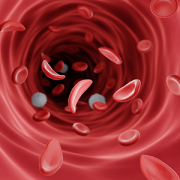Fertility preservation in sickle cell disease patients

Fertility is a long-standing concern for patients with sickle cell disease and their families.
In a recent review in the Journal of Clinical Medicine, researchers from Children’s National Hospital look at the current state of fertility preservation in patients with sickle cell disease and make recommendations for longitudinal post-treatment for these individuals.
Fertility is a long-standing concern for patients with sickle cell disease and their families. Current curative therapy for the disease requires gonadotoxic conditioning, which many patients resist because of the resulting risk of infertility. And, while standard fertility preserving interventions exist for pre- and postpubescent females and males, best practices for integrating these interventions into sickle cell disease care have not yet been established.
In their article, Children’s National hematologist Robert Sheppard Nickel, M.D., and co-authors review current fertility assessments, fertility considerations in pre- and post-transplant patients with sickle cell disease and fertility preserving interventions for patients. The authors conclude that in the future, less toxic curative approaches may make fertility preservation unnecessary, but at present, fertility preservation should be offered to patients with sickle cell disease pursing curative therapy.
Additional authors from Children’s National include Michael Hsieh, M.D., Ph.D., and Jacqueline Maher, M.D.
Read the full review article, Fertility after Curative Therapy for Sickle Cell Disease: a Comprehensive Review to Guide Care, in the Journal of Clinical Medicine.











